Вместе с локализацией игры появилось и руководство пользователя по Civilization 5 на русском языке! По сравнению с официальным английским мануалом, русский мануал несколько сокращен, но, тем не менее, содержит всю самую важную информацию по Civ5, необходимую для достижения первых побед. Ниже вы можете скачать полный русский мануал по Civilization V.

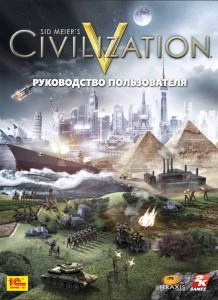
Содержание руководства по Civ5
Начало игры 3
- Главное меню 4
Меню одиночной игры 4
Экран настроек игры 4
Сохранение и загрузка 5
Уровни сложности 5
Основы игры 7
- Ходы в Civilization V 7
Пошаговая игра 7
Одновременные ходы 7
Цивилизации и лидеры 7
Советники 7
Карта мира 8
Игровое управление 8
Неизвестные территории 9
Окна информации 9
Ландшафт 10
Ресурсы 10
Юниты 18
Перемещение 21
Сражение 23
Основные типы сражений 24
Варвары и руины 29
Города 31
Постройки 35
Продовольствие в городе 36
Наука и культура 38
Рабочие и улучшения 40
Государственное устройство 43
Полисы 45
Появление великих людей 47
Расходы 50
Настроение 51
Золотой век 52
Чудеса 52
Дипломатия 53
Победа и поражение 55
Продвинутые правила 58
- Воздушный бой 58
Ядерное оружие 61
Список юнитов 61
Повышения юнитов 71
Список чудес 76
Список зданий 79
Сетевая игра 85
Модификации 87
ГАРАНТИЯ 89
ТЕХНИЧЕСКАЯ ПОДДЕРЖКА 93
Скачать Civilization 5 русский Manual
Имя файла: Civilization-V-Manual-Rus.pdf
Размер файла: 5.45 MB
Язык: русский
Ссылки на скачивание:
- скачать с letitbit.net
- скачать с vip-file.com
- скачать с shareflare.net
- скачать с depositfiles.com
Советуем почитать:
Часто игрокам сложно понять, как создать тот или иной предмет и где в игре найти нужные ресурсы. В этом разделе обычно можно найти полное прохождение, советы для новичков по прохождению сложных уровней и квестов. Здесь собраны гайды по Sid Meier’s Civilization 5, которые помогут найти все коллекционные предметы; расскажут, как убить всех боссов и пройти игру на 100%, собрав все достижения. Sid Meier’s Civilization 5 тормозит, не запускается и вылетает? Возможно, здесь найдется решение технических проблем, которое поможет убрать глюки, вылеты и баги.
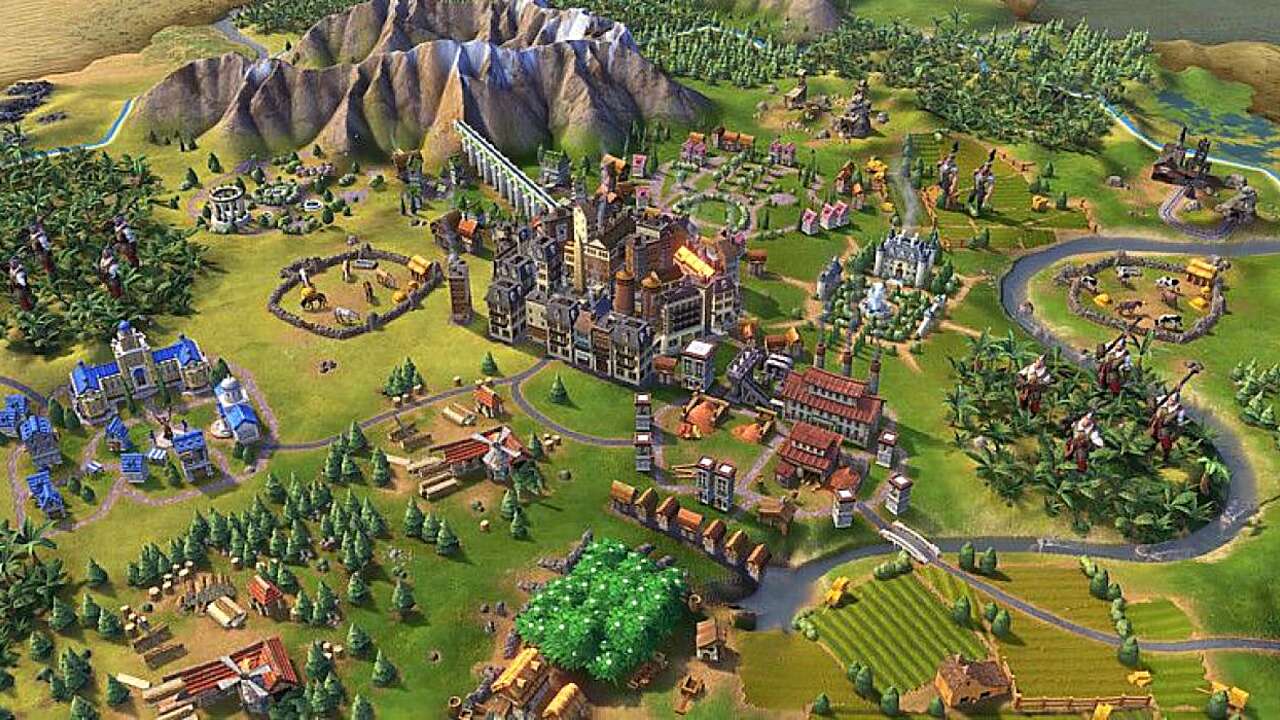
Гайд Civilization 6 — что такое религиозная победа, как добиться религиозной победы, как победить Испанию
Мы продолжаем нашу серию гайдов о победах в Civilization 6 и способах их достижения. В сегодняшней статье мы поговорим о новом типе победы в игре — о религиозной победе и способах ее достижения, рассмотрим способы увеличения генерации очков Веры. Также представим цивилизации, лучше всего подходящие для достижения этой победы. О том, какую новую роль религия играет в Civilization 6 и какие есть новые юниты, вы можете прочитать в нашей отдельной статье.
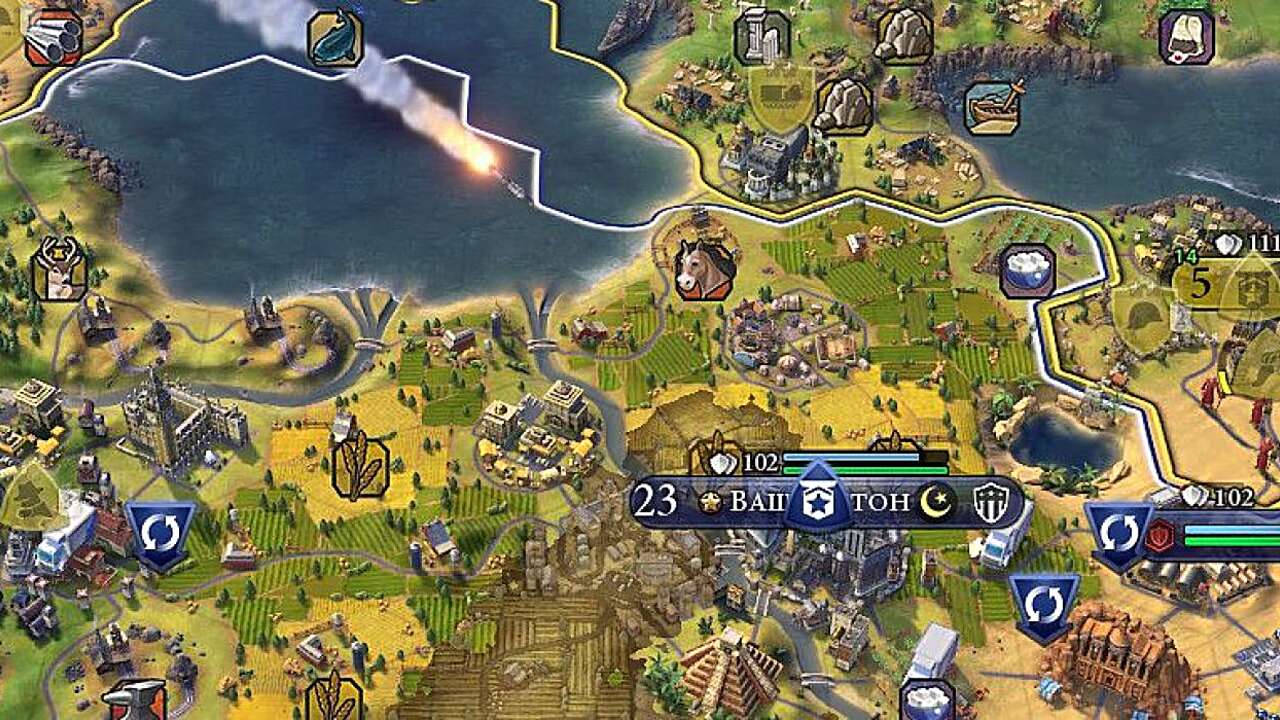
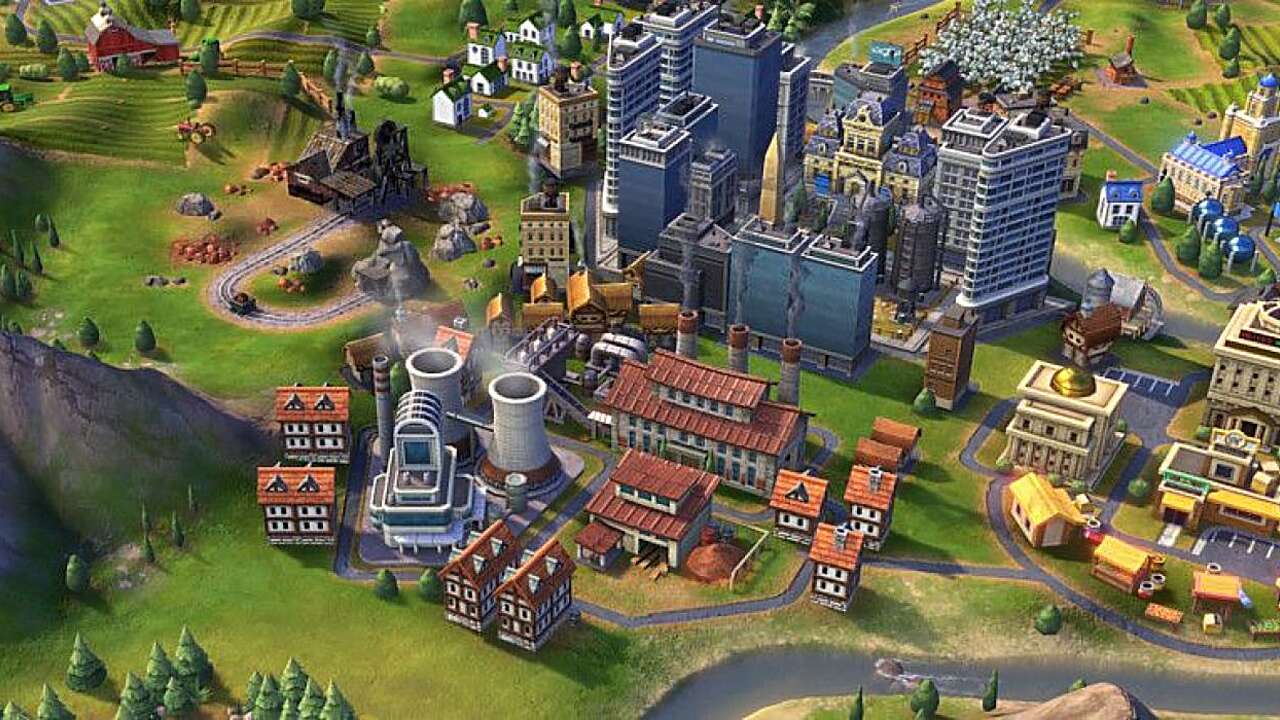
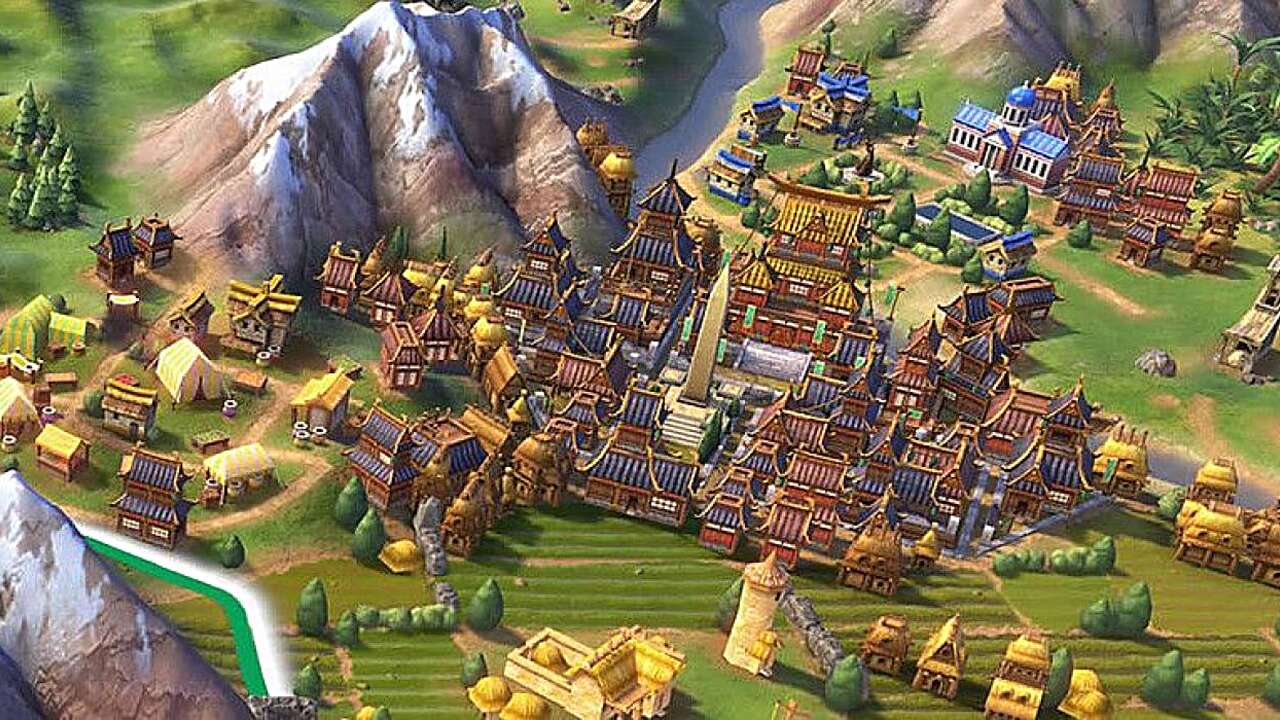
Back to Civilization V
This page is used to submit and view strategies for Civilization V.
Basic Concepts[]
Dollar Diplomacy[]
Early on, try to find city-states (30 Gold if you meet them first, and 15
Gold if you don’t). Then try to sell your embassies to the AI for 1
Gold per turn. Remember though that this gives the AI knowledge of the location of your capital city, which could result in them coveting your lands. Think twice about giving embassies to warmongering civilizations (the Zulus, Mongols, Huns, etc.), especially on higher difficulties. Starting to trade with civilizations early on makes them friendlier and more likely to give you a Declaration of Friendship. Early alliances also allow you to sell your luxuries for 240
Gold instead of just 7
Gold per turn, which equals only 210
Gold (though this differs on slower or faster game speeds). Always start your game by building at least 1-2 Scouts on big continental maps and fewer on island maps to explore for new city locations, ancient ruins and meeting more city-states.
Citizen Management[]
In the early game it’s most important for your city to grow. Set your city on production focus and lock «growth» tiles (tiles with 3 or more Food, so named because each citizen consumes 2
Food). When a city grows, the new citizen will automatically work the highest production tile and you will get the benefit on the very same turn, because food is first consumed on a food tile on the following turn.
Optimal City Placement and How to Expand[]
The perfect city placement needs the following, in order of importance:
While producing a Settler your city cannot starve or grow, which allows every tile to be devoted to production and gold generation. 3 Food counts for 1
Production in Settler production. You generally shouldn’t produce Settlers before having 4
Population, because it will take too long to build a Settler and your city will take too long to catch up to other players when you finish the Settlers.
Your expansion should be located next to luxuries you don’t have or settling a claim on an extremely good strategic position for further conquest or turtling. You should always aim at least for another luxury, because settling each city consumes 4 Happiness. It is often advisable to settle directly on luxuries that require a Camp (such as Furs and Truffles) or a Plantation (such as Cocoa, Citrus, Wine, and Cotton). Settling on a luxury delays the need for a Worker early on, since the city automatically works it with the appropriate tech; however, it denies your city the tile yields of the improved luxury. Camps and Plantations only yield additional
Gold when improved whereas Mines and Quarries yield additional
Production (a much more important resource); thus the opportunity cost of settling on a resource that requires a Mine or a Quarry is much higher.
Basic Worker Use[]
The primary purpose of Workers early on is to increase the yield of tiles worked. Something very important to consider early on is that tile improvements can be changed later in the game. Your first focus should be around improving luxury resources you may have that you have the appropriate tech for. Improving tiles that can become Farms is equally important as this will significantly boost food. Improve tiles that do not require preliminary work, such as clearing a forest or a jungle, first so as to have the quickest yield from tiles. If you pursue the Liberty policy tree, be sure to unlock the policy that grants an additional Worker and 25% faster tile improvement speed, as this will help throughout the game.
Especially on higher difficulties, Workers are prohibitively expensive to produce. Do not be afraid to steal Workers from city-states or AI opponents early in the game. Doing so early often does not result in any meaningful diplomatic penalty later in the game while yielding you «free» Workers and potentially seriously setting the AIs back.
How to Ally City-States[]
Don’t ignore the value a City-State can provide as an Ally. Depending on the path a city-state follows, you can be granted Culture,
Faith,
Food, military units (some of which you can’t acquire otherwise), or
Happiness. You can increase your friendship with a city-state in several ways. Money gifts work well, and the bonus you get when a city-state is working on a project can increase your friendship level dramatically. Gifting units also provides an increase, but each city-state will ask for favors or make special requests, such as building a new world wonder or finding the territory of another civilization. Completing these missions provides friendship points that can be picked up rather easily. Fighting Barbarians is another effective way to gain influence with a city-state. You can gain 12
Influence by killing a barbarian unit in or adjacent to a city-state’s territory, and when the city-state asks for help in getting rid of a certain encampment, up to 50
Influence can be awarded.
In certain situations, you can expand your friendship with multiple city-states at once, or rapidly increase the rate of gaining influence, with some careful planning and unit placement. If two city-states’ territories come together, and an encampment spawns at their border, killing barbarians will increase friendship with both city-states. Also, rescuing a city-state Worker and returning it to the city-state is worth 45 Influence. Playing with rampaging barbarians (selected on the setup screen) will increase the rate at which encampments will generate new barbarians. If you can rescue a Worker outside the encampment, it often possible to position your units in a such a way that you can control which direction the Worker heads. By keeping a Worker close to an encampment, you can allow barbarians to capture the Worker again and again, rescuing it each time and gaining points for killing barbarians as well as rescuing Workers. Just be cautious that a wandering unit from another civilization doesn’t come and ruin your good thing by killing the barbarians (or their encampment) themselves.
Religion[]
Religion is not a win condition, but it helps you achieve cultural victory because tourism has a greater effect on civilizations sharing your religion. If you want to have a strong religion game, you need to pick a civilization that has a religious theme (such as the Celts or Ethiopia) or have a city with a lot of workable desert tiles (especially oases and hills) while rushing the pantheon Desert Folklore (which makes each desert tile produce 1 Faith).
Great early game faith generation allows you to found the first religion, granting you access to all religious beliefs available. Generally, you want to fit the religious beliefs to your playstyle but the best are Tithe (for gold generation), Pagodas (buildings purchasable with faith that grant happiness), Religious Texts (faster spread of your religion) and Jesuit Education (can purchase scholarly buildings with faith). If you can’t pick those, get some that fit with your overall plan.
Warmongering on Immortal and Deity Difficulties[]
https://forums.civfanatics.com/threads/domination-on-immortal-deity-a-noobs-guide.547630/ (single-player guide)
This guide describes how to pull off conquest assisted victories on higher difficulties (and Pangaea/Continents maps), and lists four good units to do so with: the Composite Bowman (Classical Era), Crossbowman (Medieval Era), Cannon (Renaissance Era), and Artillery (Industrial Era). It also has more information describing how best to start (build order; Tradition, Liberty, Honour; 3 city early National College; rush Oracle; etc.) Finally, it also drops hints on how to manipulate city-states in your favour during wartime. This guide is massively helpful in bridging the gap to a higher difficulty.
This guide assumes a Standard turn time; however, Epic or Marathon are much easier for war, as it takes longer for units to become obsolete.
Small Piety[]
https://forums.civfanatics.com/threads/521674/ (single-player guide)
This guide describes how to pull off a completely peaceful diplomatic victory using Piety to spread a religion all over the world, despite being behind in Demographics for a large part of the game and on Deity. Despite any bad start (with Greece, no rivers, spawning next to the Zulus), the guide demonstrates how it can still be pulled off on a Standard sized map. This strategy can likely be refitted for other map sizes and victories too. Because of the culture from a dominant religion, all the friendships and city-state alliances, you can take Rationalism easily, have multiple Research Agreements, and gain city-state science through Scholasticism, gaining a scientific victory. Cultural victory may be slightly harder with only 3 cities, but a «Sacred Sites» religious approach may work.
Basic Tech Order and Building[]
Every win condition requires you to have a good science game. More science gives you more advanced units, better cultural buildings, a better chance at more advanced wonders, and the opportunity to find important strategic resources before your opponents do.
The first tech to research is Pottery, as it gives you access to two very important buildings: the Shrine, which allows you to found a Pantheon and eventually a Religion; and the Granary, which aids your city’s growth and leads to greater science output. Next comes Animal Husbandry, which allows you to see Horses on the map (aiding your expansion placements) and allowing you to build a Caravan. Sending Caravans between your own cities causes them to grow faster. If your cities are coastal, Sailing may be a better choice as a second technology as sea trade routes are always better than land ones. Next, research the appropriate technologies to improve the luxuries in your capital and expansions (e.g. Calendar, Trapping, Mining, or Masonry). Next, go for Writing to allow you to build a Library, increasing your science output. Build a Library in all of your cities so that you can build the ever-important National College upon researching Philosophy. If you neighbor a warmongering civilization, you may want to research Construction prior to Philosophy to allow you to build Composite Bowmen. To further increase your science output, research Education. Build Universities in all of your cities as quickly as possible, but hold off on building Oxford University. Then, head into Metal Casting and optionally Machinery. Metal Casting allows you to build the Workshop, an essential building that increases the production of your cities while Machinery allows you to build the Ironworks National Wonder that further increases production (allowing you to complete important buildings and wonders more quickly). If any of your high science output cities are located adjacent to mountains, research Astronomy and build an Observatory wherever possible. The next important technology is Scientific Theory, which allows you to build Public Schools. Next research Electricity. While you are doing that, begin building Oxford University. Leave it with one turn left until you finish researching Electricity, then complete it and use the free technology it gives you to unlock Radio. This will push you into the Modern Era very early in the game, usually giving you first pick of Ideology. Industrialization should be next, allowing you to build Factories to further increase production. Plastics is another very important technology because it gives you access to both Research Labs and Infantry, an important science building and powerful military unit respectively. From this point on, begin focusing on technologies relevant to your chosen victory.
This, of course, isn’t set in stone. Adjust your tech order to build important wonders and buildings specific to your intended victory type. There can (and should) be filler techs between those listed in the skeleton above.
Great Scientist Building[]
After you complete Public Schools, or maybe a bit sooner, start saving Great Scientists. After you complete Research Labs in most cities, increase your science production to the max for 8 turns (employ all specialists, set cities to Science production). After those 8 turns are up, bulb all your available Scientists for free technology advancement. You get more science this way because bulbing Scientists adds an average science production of the last 8 turns (though this differs depending on the game speed).
Great Writers Building[]
Bulbing Great Writers works the same as Scientists. You get the max return after 8 turns of cultural production. Ally all cultural city-states, max out culture in all your cities, win at the World’s Fair and start a Golden Age with your Great Artist. After 8 turns, start popping your Great Writers.
Opening Strategies[]
The early game is the most important part of Civilization V, because if you fail early, you won’t ever be able to win. The following are tested openers at least on Immortal difficulty (unless stated otherwise). They should all work on difficulties below that where they will be even more efficient. Click the expand button to open a strategy.
Strategy for Duel Maps with Lots of AI Players[]
More than a complete strategy, because as always there are more possible ways how to play and win a game in Civilization V, there are some very useful tips to play on very small maps. Best if you have a lot of AI enemies, like 7 or more. (You have to add them in the advanced settings when creating a single player game.)
1) Start with a good civilization/leader for small maps. Good leaders include Pocatello (Shoshone), Washington (America), Gandhi (India), Ramesses (Egypt), Ahmad al-Mansur (Morocco), Maria I (Portugal), Gustavus Adolphus (Sweden), Enrico Dandolo (Venice), and Nebuchadnezzar II (Babylon). Simply pick a leader who is good to combine with Tradition. Pocatello is absolutely great for this, because of his extremely quick land grabbing.
Bad leaders include anyone specialized a lot to play with city-states, like Alexander (Greece) or Ramkhamhaeng (Siam) or warriors like Genghis Khan (you will be a warmonger too soon on extremely small maps).
2) Trade Caravans are great. And you have a lot of them soon. It is very important, because you need gold not only to buy buildings/units from time to time, but also to buy important land tiles with strategy/luxury resources.
3) You can trade luxury resources, but do not expect much. On small maps, only from time to time is there a chance to switch resources. So you must trade additional luxury resources for gold coins. On the other hand, even AI players with one city will gladly buy A LOT of Iron, Horses, or other strategic resources.
4) If possible, build cities on coastal tiles. Maps like donut or oval are great for this type of game.
5) Trade your embassy to enemies, so you have a few coins from the start. Try to get technologies like Writing and Civil Service quickly. Also, trade your borders for 50 Gold — from 10 enemies, this is 500
Gold! Use them wisely.
6) Creating wonders is important. If you are able to get the best tiles, then you can build a lot of them. And to get the best tiles, building like Monuments, Amphitheaters and Pagodas. Also, use gold from selling embassies or open borders to buy Workshops, Windmills or other buildings that allow you to improve your production.
7) If you made a religion early, try to build Missionaries quickly and spread that religion. On small maps, if you convert two other cities, others will (relatively soon) follow as well.
Infinite City Sprawl[]
http://forums.civfanatics.com/showthread.php?t=501527
Dido[]
You have to play a map with a lot of water for lots of coastal city locations. Get the Messenger of the Gods (+2 Science from
City Connections) pantheon, fill out Liberty and the first few policies in Exploration, only found coastal cities, go Order. Each city will start with 4
Production, 3
Science, and 1
Gold, which is huge in the mid-game. Each city only costs 2
Happiness to found, due to the immediate 1
Happiness from Harbors and 1
Happiness from the city connection. Also, every city will immediately get the 20%
Production from railroads as soon as you research the technology, as well as an additional +3
Production and +1
Culture,
Food,
Gold, and
Science if you adopt the Five-Year Plan and Party Leadership tenets.
Hanging Gardens and Petra on Immortal[]
| Difficulty | Map |
|---|---|
| Immortal | Desert start bias |
This strategy guarantees getting classical wonders Hanging Gardens and Petra on Immortal difficulty. You will be behind in Science a bit, but it should kickstart a great capital city. The free Caravan from Petra will help with extra beakers from more trade routes with more advanced civilizations. The Great Engineer point from Petra combined with the free Garden guarantees an early Great Engineer, which you should implement into your plan after you finish this stuff.
| Build order | |||
|---|---|---|---|
Since a desert bias is fantastic for the belief Desert Folklore, you want to start with the Shrine. You can skip Monument and use Legalism to get it for free. It will delay your policies a bit, if you don’t find a culture Ancient Ruin, but it is not an issue. There will be small window of time where you can’t produce anything in the build order, use that time to put a couple of turns of hammers into a Worker or Caravan.
| Technology order | |||
|---|---|---|---|
You have to beeline Currency, otherwise you risk an AI getting Petra. You have more time, if there are no other desert starting bias civilizations in the game, but don’t delay it too much. It’s worth getting Masonry, if you have Marble, because its passive bonus speeds up production of classical Wonders. If you hit a science Ancient Ruin and you get a needed technology, squeeze in Writing for Libraries.
| Social policy order | ||
|---|---|---|
Nothing too complicated here. Start Tradition, get Legalism for free monuments and then Aristocracy to speed up Wonder production. After that complete Tradition and transition into your mid game plan.
| Religion |
|---|
Desert Folklore is absolutely essential. You will have a lot of Faith generation early and you’ll be able to secure a good Religion. Pick beliefs according to your overall game plan.
Babylon (rushing Great Library and Science Victory)[]
Shoshone Sub-220 Wins[]
Poland UA (4-city superpower)[]
| Difficulty | Map |
|---|---|
| Deity | Pangaea |
This 4 city opener is taking advantage of the Polish unique ability Solidarity which gives a free Social Policy when you advance to the next technological era. It uses these free policies to expand faster and more efficiently, giving you a headstart. It can be used with other Civilizations but it is not as effective. It works on every difficulty and maps with enough space for expansions that have 7 tiles between them.
After this opener aim for Hagia Sophia, Pyramids, Sistine Chapel, Chichen Itza (if not Deity) and Porcelain Tower, but judge wisely, if they are really obtainable. It supports all victory types. (Note that this requires the Brave New World DLC.)
| Build order | ||||
|---|---|---|---|---|
| 3 |
||||
| 2 |
Only get Shrine if you don’t find an ancient ruin with Faith or meet two religious city-states, which are enough for a free Pantheon. By the time you are producing Settlers, you should already have Collective Rule social policy active. When you get to constructing Oracle, Aristocracy should also kick in. Buy an additional Worker when you have 310 gold. You can also steal one from a city-state or an enemy civilization. They spawn around turn 30.
In your expansions first build Monument, Library (buy them if you have enough gold from selling Luxuries), Caravan, Worker, Granary.
| Technology order | |||
|---|---|---|---|
This is the most efficient technology order for quickly jumping ages and getting the free policies. You can add Archery, if you have issues with barbarians or neighbour an aggressive civilization. By ignoring the lower part of the research tree, your Caravans will provide a lot of extra Beakers, make sure to take advantage of that.
| Social policy order | |||
|---|---|---|---|
| Finish Tradition. |
This social policy order takes advantage of Collective Rule and Aristocracy when you are actually abusing them to their fullest potential. Wait to take Legalism until you complete Monuments in all your cities. You can pick Oligarchy before it and pick Legalism with the free policy from Oracle.
| Religion |
|---|
Religion isn’t vital for this strategy. As your Pantheon, take Fertility Rites (+10% growth) and build Hagia Sophia for your Prophet, but don’t prioritize it over Oracle or National College. As your beliefs you will want Feed the World (Shrines and Temples provide +1 food) or Swords into Plowshares (15% faster Growth rate for city, if not at war). If you can enhance your religion, take Religious Texts (religion spreads faster).
Tier Lists[]
Since part of the effectiveness of a civilization depends on individual playstyle and game settings, there is some subjectivity involved in coming up with a civilization tier list. They can, however, provide some helpful food for thought and advice for using the civilizations to their full potential. See the following tier lists and surrounding discussions for more information:
- CivFanatics tier list for Deity
- FilthyRobot’s tier list for multiplayer
- Steam Community tier list
Добро пожаловать в первый путеводитель Civilization V! Вы можете задаться вопросом, почему новые города так долго растут, или Почему здания так долго строятся. Playsector поможет вам с серией Civilization V. Информация в этом руководстве, основы, направлена на новых игроков и может быть использована в Sid Meier’s Civilization V, включая боги и короли DLC и Храбрый новый мир DLC. Поскольку каждый DLC добавляет дополнительную стратегическую механику, новым игрокам рекомендуется подождать с игрой Brave New World.
Базовые ресурсы
Сначала мы должны понять основные ресурсы, используемые в цивилизации 5.
Еда:
Еда контролирует рост города. Из общего продовольственного дохода города вычитается часть, которую съедают его жители. Избыточное производство продуктов питания приведет к росту города. Для роста с 7 до 8 размера города потребуется 77 продуктов питания. Поэтому больше избытка пищи означает более быстрый рост. При нехватке продовольствия этот буфер роста будет сокращаться. Когда буфер роста опустеет, город уменьшится в размерах.
Производство:
Производство города определяет, сколько времени требуется для строительства зданий и сооружений в вашем городе. Например, строительство бараков обойдется в 75 молотков. На 5 молотков в ход он примет 15 поворотов для того чтобы построить бараки. При 35 молотках за ход это займет 3 оборота, чтобы закончить.
Золото:
Золото не используется непосредственно самим городом. Вместо этого доходы всех городов добавляются к золотым доходам вашей империи. Из этого дохода вычитаются расходы на содержание ваших вооруженных сил, дорог и зданий. Большинство зданий стоит 1 или более золота за ход. Храм, университет и мастерская даже стоят 2 золота за ход. Золото производя здания как рынок, банк и фондовая биржа не имеют никакую цену золота.
Культура:
Культура служит двойной цели в цивилизации V. на уровне города она способствует росту границ. Городу, например, потребуется 50 культур, чтобы расширить свои границы. На уровне империи ваша культура будет способствовать разблокированию социальной политики. Это система дерева талантов, которая предоставляет вам бонусы.
Границы и территория города
Когда город построен, вы заметите цветные границы вокруг него. Это ваша территория. Город может использовать эту территорию, чтобы обеспечить ее необходимыми ресурсами: продовольствием, производством и золотом. Когда ваши границы растут, больше вариантов становятся доступными для вашего города . Рост границы обычно ползет к полезным плиткам.
В этом примере границы расширились до лошадей. Максимальный диапазон города всегда будет 3 ряда окружающих плиток, в результате чего в общей сложности 36 “гексов” доступны.
Рабочая городская плитка
Сейчас эти плитки или” заклятия “приносят доход городу только тогда, когда”работали». Для каждого жителя в городе может быть обработана одна плитка. Если в вашем городе только 3 жителя, он будет использовать только 3 из всех доступных плиток. Если он имеет 10 он может работать до 10 окружающих плиток.
Зеленый значок представляет собой плитку в процессе работы. Серые значки могут работать, но в настоящее время нет.
Фокус управления гражданами
По умолчанию городской AI всех основанных городов пытается сделать сбалансированный выбор (обозначенный как “фокус по умолчанию”) между ростом, производством и золотом. Завоеванный город, который не был аннексирован, но марионеткой (=нет контроля над тем, что он строит, но это часть вашей империи) всегда будет иметь золотой фокус.
Можно вручную выбрать другой фокус, такой как рост или производство.
Помнишь тот город раньше? Это тот же город, в котором сосредоточено производство:
Если вы посмотрите внимательно, вы заметите, что город поменялся на использование большего количества лесных плиток. Это изменение существенно повлияет на доходы города:
Продовольствие сократилось, в результате чего прогнозируемое падение роста с 8 до 13 оборотов. При этом производство увеличилось с 70.3 до 94.35.
Рельеф местности и доходы
Ядром цивилизации всегда было городское размещение. Некоторые типы местности обеспечивают продовольствие, тогда как другие обеспечивают производство, золото или даже комбинацию. Это местность, которая определяет, может ли город быстро расти и производить вещи.
Основные типы местности
Выплата каждой отдельной плитки зависит от типа местности. Их довольно много, перечислю самые распространенные:
Пастбища: +2 еды
Хилл: + 2 производство
Равнины: +1 еда, +1 Продакшн
Лес: +1 еда, +1 Продакшн
Джунгли: +1 еда, +1 Продакшн
Океан: +1 еда, +1 золото
Поймы: +2 еды
Оптимальным местности
Тундра: +1 еда
Побережье: +1 еда
Болото: -1 еда (да отрицательно)
Плохие типы местности без наград
Пустыня
Снег
Гора: Непроходимая
Лед: Непроходимый
Доходность значки
Вместо того, чтобы пытаться запомнить все эти типы местности гораздо проще настроить игру, чтобы отобразить доход каждой плитки.
После включения этих параметров игра будет выглядеть следующим образом:
С помощью этой опции мы можем быстро определить тундру с улучшением фермы, обеспечивая + 3 пищи. Крабы в океане обеспечивают +4 пищи, +1 производство и + 2 золота. Ферма у реки обеспечивает +4 корма и пастбище для коров +3 корма и + 3 производства. Включение этой опции перед заселением нового города позволит вам легко судить об окружающей среде.
Как это отвечает на первоначальный вопрос?
Резюмируя все вышесказанное, можно сделать вывод, что новые города имеют низкие темпы роста и производства из-за нехватки жителей.
Увеличение численности жителей достигается за счет создания избытка продовольствия. Вы можете временно увеличить доход от продуктов питания, выбрав фокус питания на экране управления гражданами.
Резюме: размещение в городе очень важно!
Теперь, когда вы знаете все о том, как контролировать производство и возможности роста городов, вы должны понимать, что каждый город требует сочетания продуктов питания и производства, чтобы быть полезным. Быстро растущий город без какого-либо производства займет возрастов, чтобы построить даже самые простые здания. С другой стороны, город на склоне горы без достаточного количества хорошего никогда не достигнет своего полного потенциала.
Очевидно, что есть место для разработки стратегии! Вы можете создать производство богатых городов, чтобы построить свои армии. А как насчет огромного продовольственного города, чтобы повысить свой научный доход? В таких играх, как Civilization, оптимальные пути всегда спорны. В конце концов, это зависит от вас, просто сделайте осознанный выбор!








